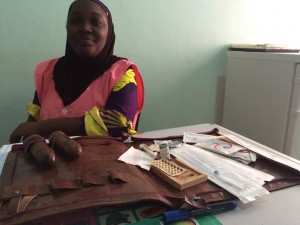
The connection between sexual and reproductive health (SRH) and maternal health, as well as their effects on women’s lives, cannot be overstated. Research shows up to a third of maternal injuries and deaths are preventable when women have access to contraception.[1] By meeting the unmet need for family planning, an estimated 1.1 million infant deaths could be prevented.[2] Alongside these critical health benefits, enabling women to delay childbirth and avoid unwanted pregnancies empowers them to decide what their own futures hold. From January 25-28, 2016, delegates from international governments, UN agencies, and NGOs including EngenderHealth gathered in Nusa Dua, Indonesia for the International Conference on Family Planning to discuss bridging these gaps and addressing unmet need for family planning.
Around the world, 867 million women between the ages of 14-49 report the need for family planning. However, 222 million of these women are unable to utilize any modern method.[3] “Unmet need” is a term that highlights this gap between women’s intentions for family planning and their behaviors. It signifies lack of access to care, unevenly distributed resources, and often the low status of women compared to men. Among women with unmet need, 90% live in lower-middle income countries (LMICs).[4] When unmet need is high, there is usually a barrier preventing women from using services. Barriers are often one (or more) of four issues:
1.) Access to care. How long is the walk to the health facility? Would a taxi cost too much? Are you able to take a day off work to travel?
2.) Availability of methods. Once you arrived at the clinic, was there a stock out?… You wanted the IUD, but only pills and injections were available. Will you settle for something you don’t feel completely comfortable with, or go home to risk becoming pregnant?… Your husband would like a vasectomy, is it available where you live?
3.) Acceptability. How does your community/society/religion feel about family planning? Do you feel you will be shamed for utilizing a contraceptive method?
4.) Quality of care. Do you have trust in the health system? Do you believe you will receive accurate information and be treated respectfully at the clinic?
Not by chance, these four issues, often referred to by the acronym AAAQ, are also the requirements put forth by the UN Committee on Economic, Social and Cultural Rights to encompass ‘the right to health.’[5] While many countries, especially LMICs, must strengthen their health system before immediately meeting these standards, every country should have policies and work plans showing how they will eventually be achieved. Fistula Care Plus works with governments and partners in six countries (Bangladesh, DRC, Nigeria, Niger, Togo, and Uganda) to address systemic barriers keeping women from realizing their rights. The project works to promote access to family planning, facility based delivery, and emergency obstetric care- all key aspects of ensuring quality services to prevent maternal injury.
Throughout our community and facility level work, Fistula Care Plus ensures activities are grounded in the principles of sexual and reproductive health and rights (SRHR). FC+ believes that all people have the right to choose if, when, and how many children they have. Furthermore, they have the right to adequate and correct information about all family planning methods, and the right to decide which method is right for them without any form of coercion. When they do decide that it is the right time to have a child, every woman deserves the right to life saving health care that can prevent maternal morbidities such as fistula, and even save her or her newborn’s life.
At this very moment, there is a critical mass of decision makers and stakeholders gathered in Indonesia discussing these rights and the pathway to reducing barriers to their achievement. It is our hope that the outcomes of ICPF 2016 include strengthened partnerships for service provision and a prioritization of sexual and reproductive health and rights by national governments. We wish you all a successful conference.
[1] Collumbien M, Gerressu M, Cleland J. Non-use and use of ineffective methods of contraception In: Ezzati M, Lopez AD, Rogers A, Murray CJL, editors. Comparative quantification of health risks: Global and regional burden of disease attributable to selected major risk factors. Geneva: World Health Organisation; 2004. p. 1255–320.
[2] Singh S and Darroch J. Adding It UP: Costs and Benefits of Contraceptive Services; estimates for 2012. Guttmacher Institute and UNFPA, June 2012. Accessed from: http://www.guttmacher.org/pubs/AIU-2012-estimates.pdf
[3] Ibid, Singh and Darroch 2012.
[4] Jacobstein R, Curtis C, Spieler J, Radloff S. Meeting the need for modern contraception: Effective solutions to a pressing global challenge. Int J Gynecol Obstet. 2013;121:S9–15. doi: 10.1016/j.ijgo.2013.02.005
[5] United Nations Committee on Economic, Social and Cultural Rights (UNCESCR) General comment no. 14: The right to the highest attainable standard of health. Geneva: United Nations; 2000. E/C.12/2000/4.


